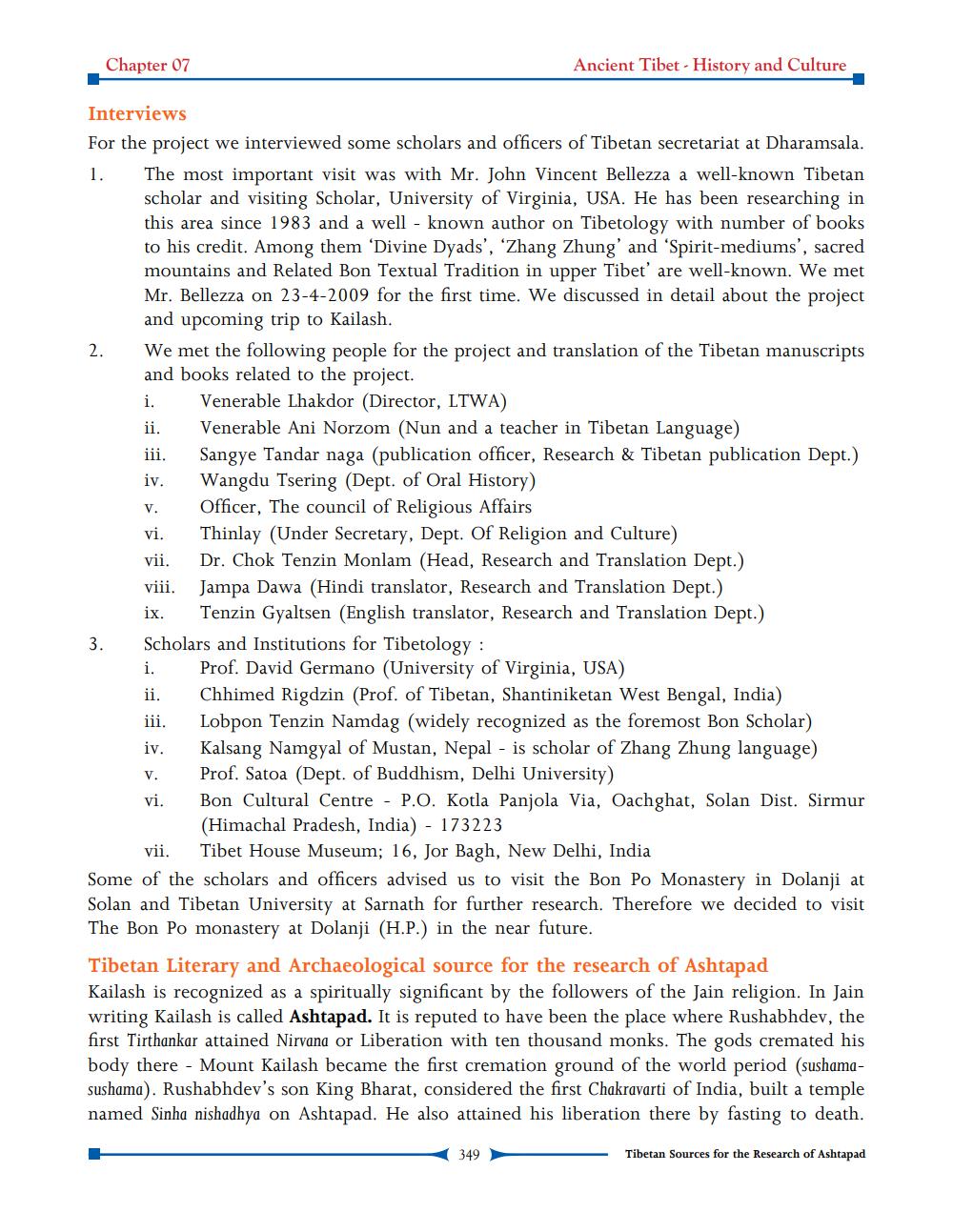________________
Chapter 07
Ancient Tibet - History and Culture
Interviews For the project we interviewed some scholars and officers of Tibetan secretariat at Dharamsala. 1. The most important visit was with Mr. John Vincent Bellezza a well-known Tibetan
scholar and visiting Scholar, University of Virginia, USA. He has been researching in this area since 1983 and a well-known author on Tibetology with number of books to his credit. Among them ‘Divine Dyads', 'Zhang Zhung' and 'Spirit-mediums', sacred mountains and Related Bon Textual Tradition in upper Tibet' are well-known. We met Mr. Bellezza on 23-4-2009 for the first time. We discussed in detail about the project and upcoming trip to Kailash. We met the following people for the project and translation of the Tibetan manuscripts and books related to the project. i. Venerable Lhakdor (Director, LTWA) ii. Venerable Ani Norzom (Nun and a teacher in Tibetan Language) iii. Sangye Tandar naga (publication officer, Research & Tibetan publication Dept.) iv. Wangdu Tsering (Dept. of Oral History)
Officer, The council of Religious Affairs vi. Thinlay (Under Secretary, Dept. Of Religion and Culture) vii. Dr. Chok Tenzin Monlam (Head, Research and Translation Dept.) viii. Jampa Dawa (Hindi translator, Research and Translation Dept.) ix. Tenzin Gyaltsen (English translator, Research and Translation Dept.) Scholars and Institutions for Tibetology: i. Prof. David Germano (University of Virginia, USA)
Chhimed Rigdzin (Prof. of Tibetan, Shantiniketan West Bengal, India) Lobpon Tenzin Namdag (widely recognized as the foremost Bon Scholar) Kalsang Namgyal of Mustan, Nepal - is scholar of Zhang Zhung language) Prof. Satoa (Dept. of Buddhism, Delhi University) Bon Cultural Centre - P.O. Kotla Panjola Via, Oachghat, Solan Dist. Sirmur
(Himachal Pradesh, India) - 173223 vii. Tibet House Museum; 16, Jor Bagh, New Delhi, India Some of the scholars and officers advised us to visit the Bon Po Monastery in Dolanji at Solan and Tibetan University at Sarnath for further research. Therefore we decided to visit The Bon Po monastery at Dolanji (H.P.) in the near future. Tibetan Literary and Archaeological source for the research of Ashtapad Kailash is recognized as a spiritually significant by the followers of the Jain religion. In Jain writing Kailash is called Ashtapad. It is reputed to have been the place where Rushabhdev, the first Tirthankar attained Nirvana or Liberation with ten thousand monks. The gods cremated his body there - Mount Kailash became the first cremation ground of the world period (sushamasushama). Rushabhdev's son King Bharat, considered the first Chakravarti of India, built a temple named Sinha nishadhya on Ashtapad. He also attained his liberation there by fasting to death.
349
Tibetan Sources for the Research of Ashtapad




